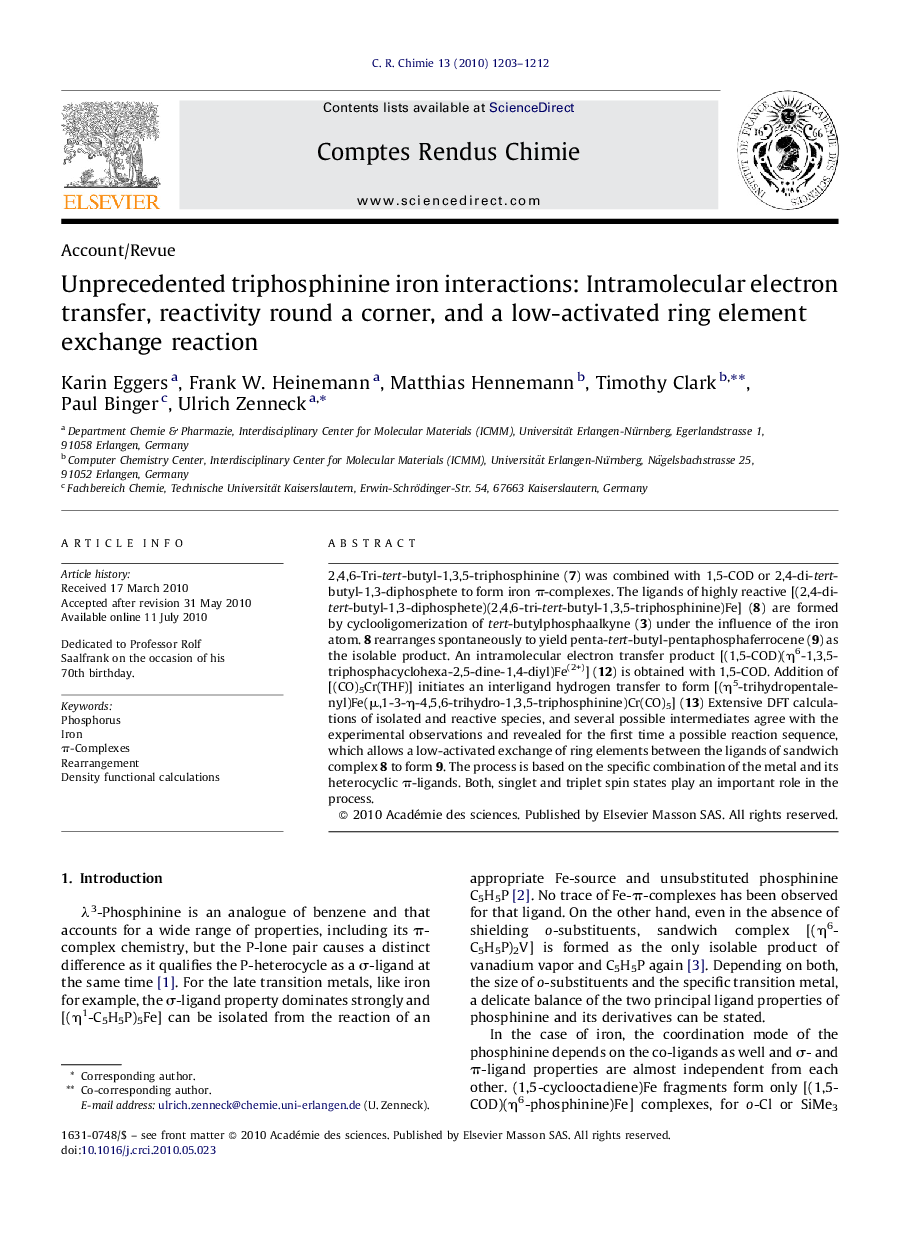| Article ID | Journal | Published Year | Pages | File Type |
|---|---|---|---|---|
| 6594618 | Comptes Rendus Chimie | 2010 | 10 Pages |
Abstract
2,4,6-Tri-tert-butyl-1,3,5-triphosphinine (7) was combined with 1,5-COD or 2,4-di-tert-butyl-1,3-diphosphete to form iron Ï-complexes. The ligands of highly reactive [(2,4-di-tert-butyl-1,3-diphosphete)(2,4,6-tri-tert-butyl-1,3,5-triphosphinine)Fe] (8) are formed by cyclooligomerization of tert-butylphosphaalkyne (3) under the influence of the iron atom. 8 rearranges spontaneously to yield penta-tert-butyl-pentaphosphaferrocene (9) as the isolable product. An intramolecular electron transfer product [(1,5-COD)(η6-1,3,5-triphosphacyclohexa-2,5-dine-1,4-diyl)Fe(2+)] (12) is obtained with 1,5-COD. Addition of [(CO)5Cr(THF)] initiates an interligand hydrogen transfer to form [(η5-trihydropentalenyl)Fe(μ,1-3-η-4,5,6-trihydro-1,3,5-triphosphinine)Cr(CO)5] (13) Extensive DFT calculations of isolated and reactive species, and several possible intermediates agree with the experimental observations and revealed for the first time a possible reaction sequence, which allows a low-activated exchange of ring elements between the ligands of sandwich complex 8 to form 9. The process is based on the specific combination of the metal and its heterocyclic Ï-ligands. Both, singlet and triplet spin states play an important role in the process.
Related Topics
Physical Sciences and Engineering
Chemical Engineering
Chemical Engineering (General)
Authors
Karin Eggers, Frank W. Heinemann, Matthias Hennemann, Timothy Clark, Paul Binger, Ulrich Zenneck,
